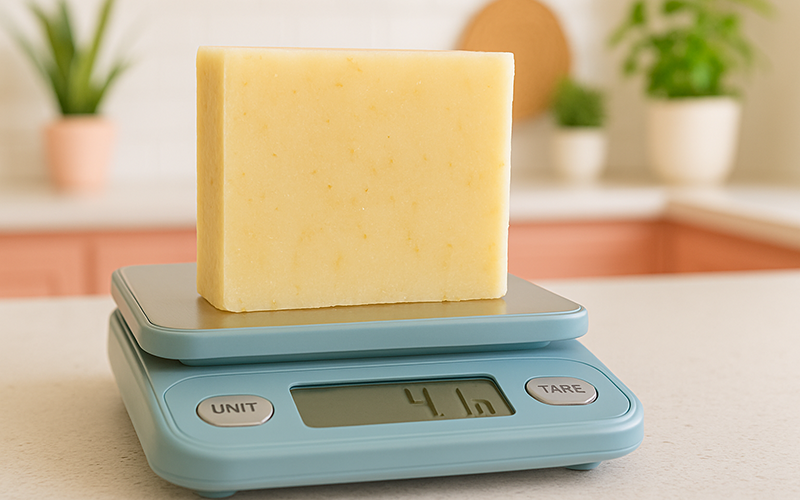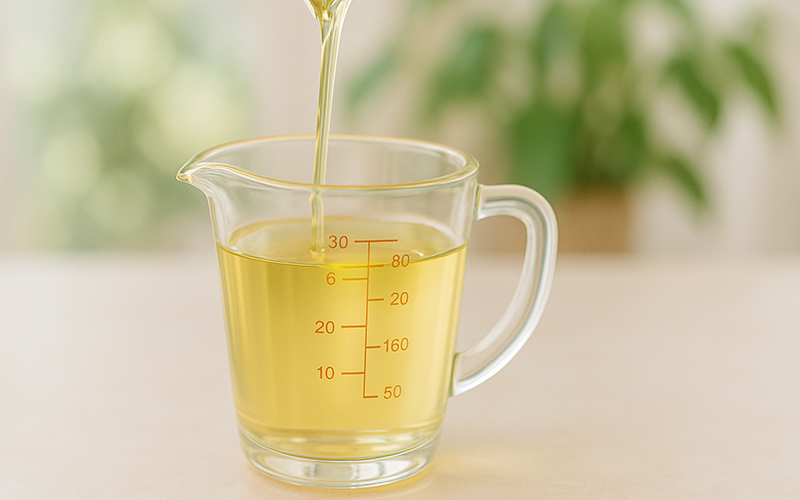When you’re creating a cosmetic (or a non-cosmetic soap), one of the key requirements for your label is the net quantity of contents—the actual amount of the product in the package. But here’s where it’s easy to get tripped up: Do you measure by weight or by volume — and what’s the difference? The answer depends on whether your product is solid, semi-solid, or liquid.
Let’s walk through what the regulations require and how you can make sure your labels are accurate and compliant.
Weight vs. Volume
In everyday conversation, we often use weight and volume interchangeably. But they’re very different measurements:
- Volume tells us how much space something takes up.
- U.S. customary units: fluid ounces (fl oz), pints, quarts
- Metric units: milliliters (mL), liters (L)
- Weight (or mass) tells us how heavy something is.
- U.S. customary units: avoirdupois ounces (oz), pounds (lb)
- Metric units: grams (g), kilograms (kg)
Avoirdupois: By weight.
(From the old French aveir de peis meaning “have by weight.”)
Here’s the tricky part: “ounce” can mean either a fluid ounce or an avoirdupois ounce. One measures volume, the other measures weight.
Containers are normally purchased based on their volume (2 oz jar, 4 oz bottle, etc). It’s natural to assume that if your jar is “4 oz,” it will hold “4 oz.” And that’s true for liquids – but not solids.
Density: How dense or tightly packed something is.
The density of solid or semi-solid products can be very different.
Your 4-ounce jar might actually hold 3.8 ounces of thick body butter, but only 2.5 ounces of whipped body butter (by weight). That’s because the whipped body butter has more air in it (and less actual body butter).
The key thing here is that you are measuring and selling the amount of product in the jar… not the amount of air. So solid or semi-solid products are sold by weight.
That’s why the rules are strict:
- Solids and semi-solids = weight
- Liquids = volume
Mixing them up can make your label misleading—and that’s considered misbranding under both FDA and FTC regulations.
Solid and Semi-Solid Products
For solid and semi-solid products, net contents must be stated by weight.

Examples include:
- Soap bars (cosmetic or non-cosmetic)
- Lip balms
- Body butters
- Bath bombs
When labeling, you weigh the actual product—not the container—and declare that number in both U.S. customary and metric units.
Example: “Net Wt. 4 oz (113 g)”
Note that “Wt.” or “Weight” should be included, so customers don’t confuse it with fluid ounces.
Liquid Products
For liquid products, net contents must be stated by volume.

Examples include:
- Lotions
- Liquid soaps and shampoos
- Toners
- Oils and serums
Again, you measure the product only—not the bottle. The correct declaration includes U.S. customary and metric fluid measures.
Example: “Net 8 fl oz (237 mL)”
Notice the “fl” in fluid ounces—this is required, because otherwise it could be mistaken for weight.
Approved Units to Use
Regulations require that you use specific units for net contents, in both U.S. customary and metric systems.
- Weight (solids, semi-solids):
- U.S.: ounces (oz), pounds (lb)
- Metric: grams (g), kilograms (kg)
- Volume (liquids):
- U.S.: fluid ounces (fl oz), pints, quarts, gallons
- Metric: milliliters (mL), liters (L)
Do not use “cups,” “tablespoons,” or vague terms like “jar” or “bottle.” Only the approved units are allowed.
Measuring Tips
- Calibrate your scale and measuring tools. Check the calibration to make sure it is accurate (if battery operated, change the batteries regularly)
- Tare the container. Make sure your measurement excludes the weight or volume of the container.
- Round properly. Follow standard rounding rules—don’t inflate your contents.
Final Thoughts
Getting net contents right isn’t just about following the law—it’s about being clear and fair with your customers. Using weight for solids and semi-solids, and volume for liquids, keeps your labels compliant and avoids confusion.
Once you understand the difference between the two, it becomes second nature—and your labels will look professional and accurate.


Leave a Reply